Why Did My 1980s Slab Crack?
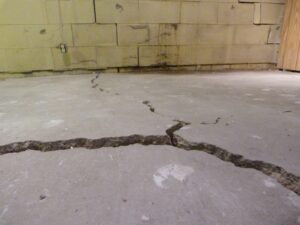 Few things are more concerning than pulling up the old carpet in a house you just bought and seeing a crack in the concrete slab. This issue is quite common in older homes and the attached driveways. It is often due to the poor construction methods used at the time. Here’s why.
All concrete slabs and driveways installed today are reinforced with rebar (don’t settle for the fiberglass alternative). This really helps prevent cracks and reinforces the concrete – IF it is installed correctly.
Slabs in houses built more than 30 years ago were often reinformed with hog wire. This is a heavy gauge mesh that is quite strong, but not very rigid, and it was often poorly installed. Therefore, it had no benefit to the concrete. Many driveways back in the 1980s were placed with absolutely no metal reinforcement at all.
In order to be effective, any steel reinforcement should be in the middle of the concrete slab. A 4” thick slab should have the metal two inches from the surface, and two inches from the dirt, as pictured here.
Few things are more concerning than pulling up the old carpet in a house you just bought and seeing a crack in the concrete slab. This issue is quite common in older homes and the attached driveways. It is often due to the poor construction methods used at the time. Here’s why.
All concrete slabs and driveways installed today are reinforced with rebar (don’t settle for the fiberglass alternative). This really helps prevent cracks and reinforces the concrete – IF it is installed correctly.
Slabs in houses built more than 30 years ago were often reinformed with hog wire. This is a heavy gauge mesh that is quite strong, but not very rigid, and it was often poorly installed. Therefore, it had no benefit to the concrete. Many driveways back in the 1980s were placed with absolutely no metal reinforcement at all.
In order to be effective, any steel reinforcement should be in the middle of the concrete slab. A 4” thick slab should have the metal two inches from the surface, and two inches from the dirt, as pictured here.
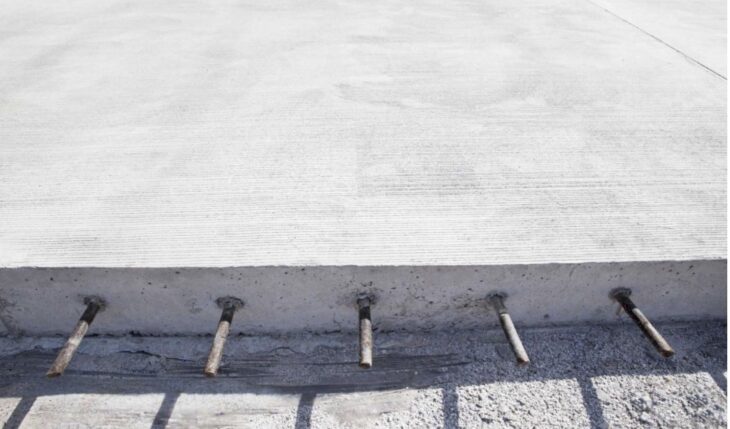 The problem with hog wire is that it was laid on the ground, and the concrete finishers would try to lift the wire off of the ground as the concrete was being poured. Most of the time, the wire ended up under the concrete providing no benefit whatsoever.
The problem with hog wire is that it was laid on the ground, and the concrete finishers would try to lift the wire off of the ground as the concrete was being poured. Most of the time, the wire ended up under the concrete providing no benefit whatsoever.
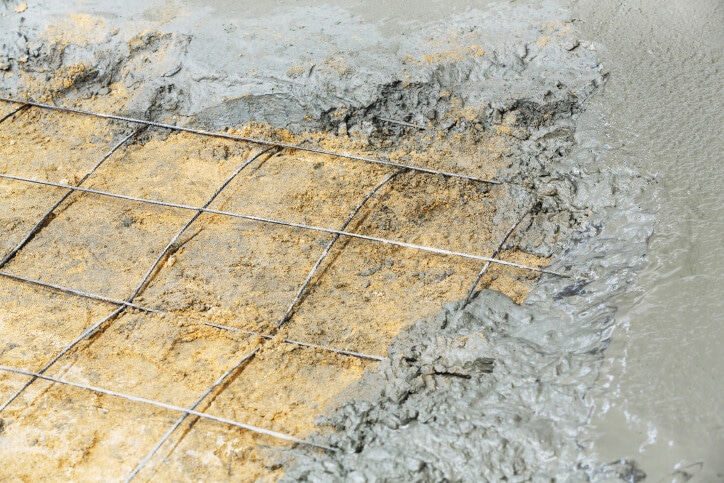
To properly reinforce concrete, rebar should be installed in a mesh pattern with each piece no more than 12” apart. To hold it together, the rebar is tied with wire or welded wherever the pieces intersect as pictured below.
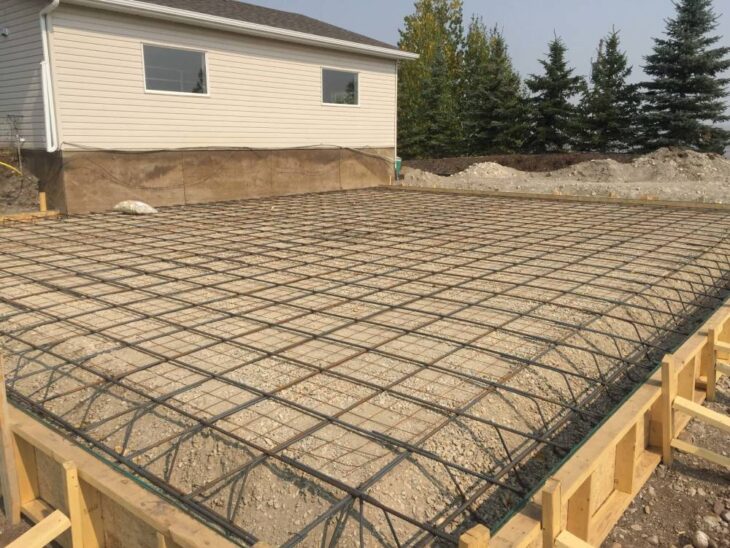 Even though this rebar looks like it is properly installed, you can still end up with the rebar laying under the concrete, providing no benefit, similarly to the hog wire described earlier. As you can see from the pictures below, the concrete finisher is stepping on the rebar, causing it to end up under the concrete. It is useless.
Even though this rebar looks like it is properly installed, you can still end up with the rebar laying under the concrete, providing no benefit, similarly to the hog wire described earlier. As you can see from the pictures below, the concrete finisher is stepping on the rebar, causing it to end up under the concrete. It is useless.
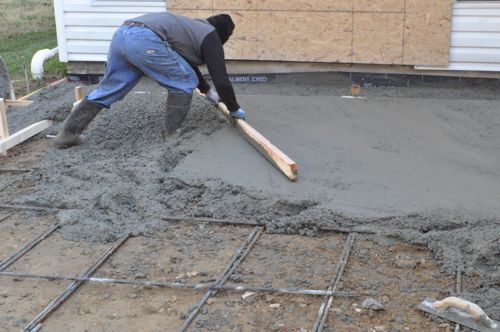 This is very common when landscapers or even “cheap” concrete contractors install concrete. This concrete will likely crack prematurely. This is especially true for garage slabs and driveways which have to support heavy cars and delivery vehicles.
The proper way to isolate the rebar in the center of the slab is to use rebar “chairs”. These are very inexpensive plastic or concrete blocks that simply hold the rebar off the ground.
This is very common when landscapers or even “cheap” concrete contractors install concrete. This concrete will likely crack prematurely. This is especially true for garage slabs and driveways which have to support heavy cars and delivery vehicles.
The proper way to isolate the rebar in the center of the slab is to use rebar “chairs”. These are very inexpensive plastic or concrete blocks that simply hold the rebar off the ground.
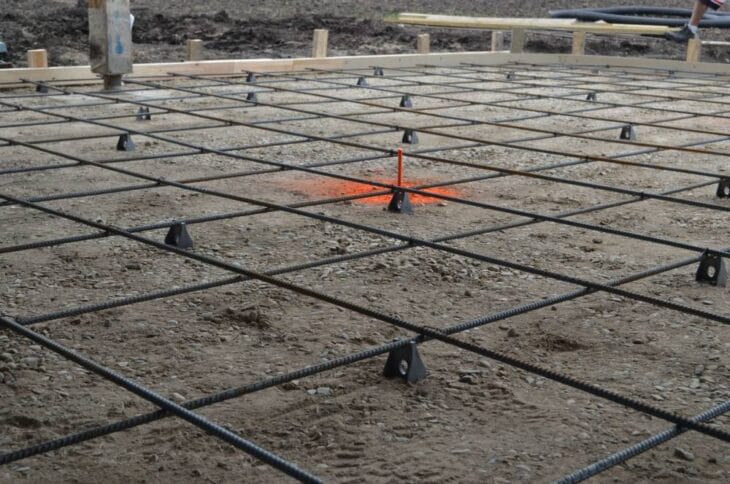 You should insist that your contractor use these blocks. Write it in the contract. Not only is it the correct way to do it, they are very inexpensive and they make the job much easier for the contractor.
In addition to the proper installation of rebar, there is one other critical step needed to prolong the look and durability of your new concrete slab or driveway. It has to do with controlling the inevitable cracking that occurs in just about any section of concrete. Since earth settlement, heavy vehicles, roots, etc can all put stress on the concrete, the only way to minimize the appearance of cracks is to control where they develop. This is done by putting control joints in the concrete. By creating control joints, either by cutting the concrete or trowelling them in, the cracks will be confined to these joints and they will not be as noticeable.
In order to produce the best results, control joints should be no further than 10 feet apart in any direction. Even decorative control joints must be no more than 10 feet apart in any direction.
You should insist that your contractor use these blocks. Write it in the contract. Not only is it the correct way to do it, they are very inexpensive and they make the job much easier for the contractor.
In addition to the proper installation of rebar, there is one other critical step needed to prolong the look and durability of your new concrete slab or driveway. It has to do with controlling the inevitable cracking that occurs in just about any section of concrete. Since earth settlement, heavy vehicles, roots, etc can all put stress on the concrete, the only way to minimize the appearance of cracks is to control where they develop. This is done by putting control joints in the concrete. By creating control joints, either by cutting the concrete or trowelling them in, the cracks will be confined to these joints and they will not be as noticeable.
In order to produce the best results, control joints should be no further than 10 feet apart in any direction. Even decorative control joints must be no more than 10 feet apart in any direction.
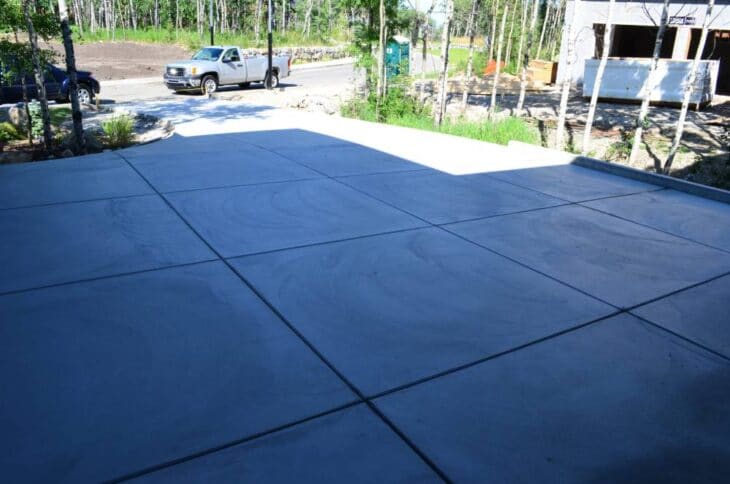 Regardless of who does your next concrete project, be sure to stipulate these items in your contract. These are things that cannot be easily remedied after the concrete is in place. If the person you hired tries to tell you that they have “done it their way for 30 years” without the features discussed here, find someone else.
Check with your local building department to see if they have additional requirements before you start your project. If you have any questions, please contact The Real Estate Inspection Company at www.sdinspect.com/contact/
Regardless of who does your next concrete project, be sure to stipulate these items in your contract. These are things that cannot be easily remedied after the concrete is in place. If the person you hired tries to tell you that they have “done it their way for 30 years” without the features discussed here, find someone else.
Check with your local building department to see if they have additional requirements before you start your project. If you have any questions, please contact The Real Estate Inspection Company at www.sdinspect.com/contact/


